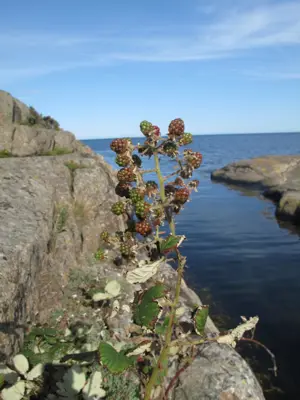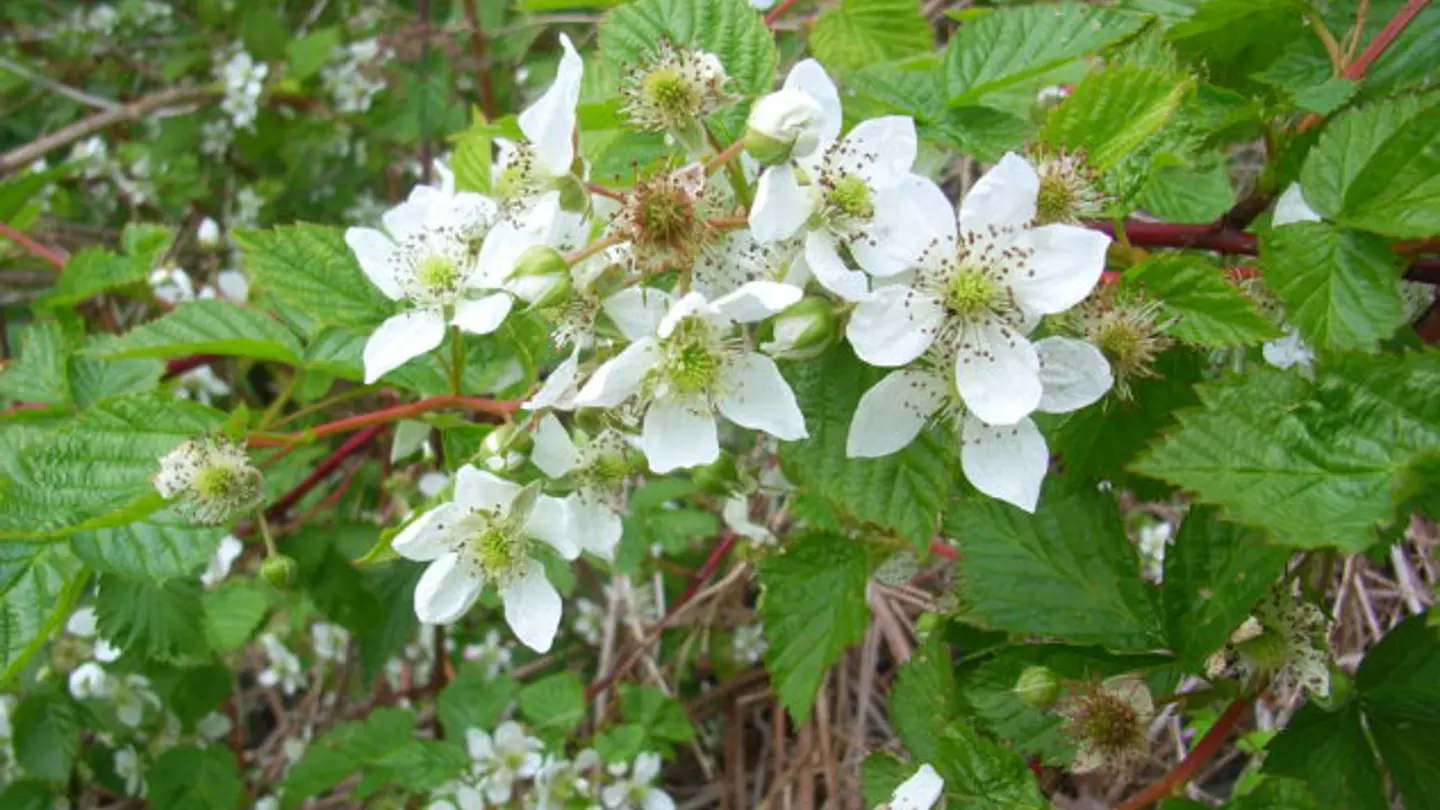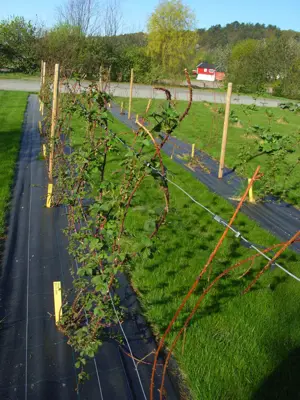
Blackberries – berries and taxonomy worth a study
- Home
- Projects
- Crop Wild Relatives
- Plant portraits
- Blackberries – berries and taxonomy worth a study
Blackberries are exiting plants, both for botanists and ecologists and for berry-pickers who enjoy the sweet and mild taste of the black delicacy, which sometimes can be a struggle to harvest, due to the very sharp thorns that most black berry plants are well equipped with.

However, be cautious when looking for blackberries; there is a broad diversity of tastes within the diverse group of blackberry species, and only very skilled botanists are able to distinguish between close related blackberry species. And don’t get hurt when crawling into compact blackberry shrubs.
Blackberries belong to the Rubus genus in the Rosacea family. More than 140 different Rubus taxa can be found in one or more of the Nordic countries. Other Rubus delicacies are raspberries (R. idaeus), cloudberries (R. chamaemorus) and arctic raspberries (R. arcticus). Eight Rubus species in the wild flora are closely related to cultivated Rubus, and designated as priority crop wild relatives in the Nordic region.
Dozens of species
Actually, the blackberry flora in the Nordic countries consists of several dozens of species, and only a handful of botanists are able to distinguish between them. Apomixis, an asexual mode of seed formation that produces clonal progeny with a maternal genotype, is the reason for the high number of blackberry species in the Nordic flora.
Species producing progeny through apomixis will easily form new species and agamospecies*), challenging botanists and taxonomists when editing scientific reports and handbooks of plants. Other genera with high levels of apomixis are Taraxacum (dandelion), Hieracium (hawkweed), Sorbus trees and Poa grass species.
Actually, in the Swedish flora you can find 57 described blackberry species, in the Norwegian flora you find 40. Some of these taste good and some hardly taste at all. Some are indigenous and some are immigrants. Some are red listed and threatened and some are classified as invasive and then listed on black lists of foreign species with higher or lower potential to harm indigenous flora and ecosystems.

Need mild winters
Cultivation of blackberries is not widespread in the Nordic countries. Blackberries need fertile soils and warm climates. As reflected by the distribution of the wild berries, the areas suitable for cultivation are mainly in southern coastal areas with mild winters. Cultivation is more common in other regions, e.g. in the United States, and frozen berries for consumption are imported to the Nordic countries.
Breeding of new black berry varieties is taking place in some countries, however, varieties well adapted to Nordic conditions are hard to find. Cultivation of foreign thorn less varieties is possible with climate improving methods, e.g. greenhouses, but commercial outdoor field cultivation of blackberries is not common.
Picking wild blackberries along the coastline can, however, give rich yields. Consequently, it is quite likely that wild blackberry species in the Nordic flora contains genes that could be used in the breeding of new varieties, making regular field production of blackberries possible and profitable also in our countries.

Limited distribution
To illustrate the complexity, the last edition of the Handbook of Norwegian plants (Elven, R., ed. 2005) is listing 28 so called true blackberry species and 12 agamospecies. Due to the unusual breeding mechanisms, it is expected that several species are not yet discovered and/or described. The main area of distribution of these species is a quite narrow coastal zone ranging from the Swedish boarder along the coast until Rogaland in the south-east.
As new blackberry species can evolve spontaneously, many of them have a quite limited distribution. As a consequence of this, many of them are rare and included in the Norwegian red list of threatened species. In total 16 of the indigenous Norwegian black berry species are red–listed with different threat status. Five species are critically endangered (CR), six species are vulnerable (VU) and five near threatened (NT).
On the other hand, 14 of the blackberry species that are found in the wild Norwegian flora are introduced species, some deliberately and some have arrived and established on their own. Three of these have high or potentially high risk of spreading and interfering natural ecosystems.
Invasive plant
Armenian blackberries (Rubus armeniacus) as an example, was imported to gardens more than a century ago due to very sweet and tasty berries. The species have later on escaped from cultivation, and is now well established in the wild flora, many places forming substantial and impenetrable stands. Armenian black berries are now one of the most popular black berries among berry pickers and at the same time considered to be an invasive plant with high risk of altering indigenous flora.
Due to the red list status of many blackberry species, the Norwegian Genetic Resource Centre has established a field gene bank for conservation of the rare and threatened species in Grimstad, on the south-east coast of Norway. The majority of threatened species are conserved in the collection.
Naming of the blackberry species reflects that many of them have Nordic origin. Among the blackberry species we find Danish blackberry (R. leptothyrsus), Norwegian blackberries (R. nemoralis), Swedish blackberries (R. gothicus), R. norwegicus (so far without any Nordic name), R. sleswicensis and R. hallandicus.
*Agamospecies is a taxonomic unit, genotypes that evolve from asexual seed reproduction, mostly having very small internal genetic variation.
References
Elven, R., ed. 2005. Norsk flora. Lid. J. and Lid. D.T.


